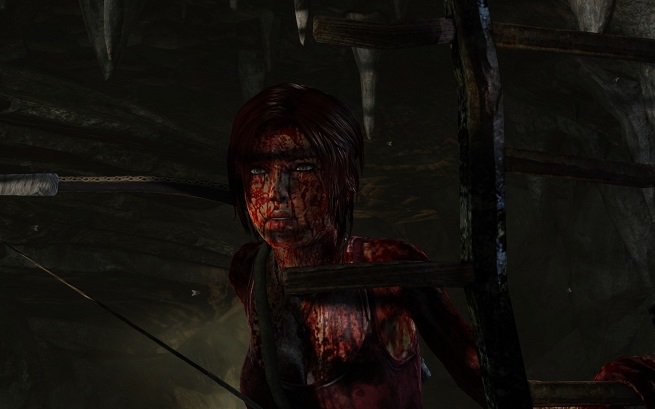This post has not been edited by the GamesBeat staff. Opinions by GamesBeat community writers do not necessarily reflect those of the staff.

Every action adventure game that tries to have a decent storyline runs into the dichotomy of the protagonist having to shoot hundreds of people because of how the game is designed. The problem is a simple mismatch of genres.
Possibly the most famous question in the gaming community is, “How can Uncharted’s Nathan Drake be an everyman if he kills a thousand people over the course of the game?” The new Tomb Raider has run into the same problem. Near the beginning, players see protagonist Lara Croft freak out the first time she kills a person, and five minutes later, she’s mowing people down by the dozens. Don’t even get me started on Call of Duty.
We’re trying to have these realistic stories in video games with believable characters, but developers are doing it with the same unrealistic game mechanics. The problem isn’t mechanics; the problem is the fact that developers are trying to tell these tales and put these characters in shooters. That genre just wasn’t built for this kind of storytelling.
One solution could be giving more options to the player. Stealth games let you use nonlethal takedowns or bypass enemies entirely. That’s still a cop-out because the player is still able to take the role of a single person defeating hundreds. No matter how “relatable” the protagonist is written to be, she is still a superhero in a game where she faces off against such huge numbers.
Now look back at the games that popularized the shooter genre: Doom, Quake, and Duke Nukem. All of those are games where you shoot aliens or demons or some other kind of monster. You don’t kill any humans in any of these, yet they’re all very fun action games. The same goes for, say, Super Mario Bros. or Devil May Cry. These both focused on creating good action gameplay and didn’t try to make the crazy proceedings look “real,” which also allowed them to have more varied mechanics.
The only popular shooter today that has these same traits is Gears of War. Epic actually designed a fantastical setting for its fantastical gameplay. The fact that Marcus Fenix is shooting up monsters means that Epic can design whatever fun enemies it wants instead of the same three human types you see in Call of Duty or Uncharted. The same goes for the weapons — you can’t rationalize a gun that shoots subterranean bombs in Call of Duty, but that doesn’t matter in Gears. And at the end of it all, Fenix probably has a far lower body count of human beings than Drake or Croft.

Epic has even stated that this is a reason for designing the setting we see in the series. When asked why Gears of War: Judgment doesn’t take place at a point in the canon before the Locus horde appears, game designer Clifford Bleszinski said that it wouldn’t be Gears without monsters to kill. Epic specifically avoided having human-on-human conflict in the game.
But Uncharted creative director Amy Hennig responded to the same issue by directly comparing the series to one of its main inspirations, Indiana Jones. “Let’s say you made a game out of Raiders of the Lost Ark. It wouldn’t be any fun. Because [gaming’s] an active experience; you have to have that interaction of shooting and having combat,” she said. “But if we only had you fight three guys over the course of two hours, you’d say, ‘this sucks.’”
Funnily enough, someone actually did make a game based on one of the Indiana movies back in 1989, The Last Crusade, which was a graphical adventure game similar to The Walking Dead series. Players mostly explored and solved puzzles — basically what Harrison Ford did in the movies. It feels crazy that I even have to say this, but shooting isn’t the only mechanic that makes a game fun. They even made another Indiana game in the same vein, The Fate of Atlantis.
That seems perfectly fit for the stories that Uncharted and Tomb Raider are trying to tell. Tomb Raider wasn’t even a shooter until the reboot. In the previous games, the combat was always the least interesting aspect. Players spent most of their time exploring and solving puzzles. Tomb Raider: Anniversary even had its own moment where Lara freaks out after having shot someone … after she’d spent the whole game solving puzzles and killing the occasional hostile animal. In the latest game, the actual raiding of tombs is put on the back-burner in favor of shooting up people. I suppose that the only reason Tomb Raider and Uncharted can’t just be puzzle-filled platformers is because then they wouldn’t each sell five million copies.
Therein lies the problem: The big-budget console game market is cornered into shooters and action role-playing games. Developers are trying to expand the caliber of storytelling in big-budget games, but I think they’re forced into the wrong genre for it. Maybe those kinds of stories need to be reserved for lower-budget adventure games. Maybe that kind of gameplay should be reserved for more outlandish settings and stories (which is what Uncharted developer Naughty Dog wanted to do before Sony decreed they get in on the dark shooter trend). Maybe someone needs to find a way to make alternative genres, like adventure games, more popular. It’d be nice if more successes like The Walking Dead got media attention so developers wouldn’t feel like shooters are the only games that sell.
Originally posted on MultiPlatform.
